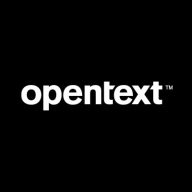

OpenText Application Quality Management and OpenText Software Delivery Management are both prominent in the application lifecycle management category. The former has the upper hand in data management and API capabilities, while the latter excels in licensing flexibility and integration capabilities.
Features: OpenText Application Quality Management is notable for traceability, API robustness, and customization, making it suitable for large organizations with requirements for testing artifact storage and defect tracking integration. OpenText Software Delivery Management offers flexible licensing and integrates seamlessly with automation tools, test cases, and reporting functions.
Room for Improvement: OpenText Application Quality Management needs to improve reporting features, compatibility with non-IE browsers, and user-friendliness in licensing and administration. OpenText Software Delivery Management could enhance support for shared services testing, deployment object testing, and its integration between Waterfall and Agile methodologies.
Ease of Deployment and Customer Service: OpenText Application Quality Management can be deployed on various cloud and on-premises environments, offering flexibility but with support issues such as response times and potential escalation of technical problems. Whereas OpenText Software Delivery Management offers similar deployment options but has mixed reviews on technical support's knowledge and structure.
Pricing and ROI: Both OpenText Application Quality Management and OpenText Software Delivery Management are seen as expensive, with negotiation recommended to balance cost and features. Despite high costs, both offer significant ROI through long-term efficiencies in traceability, project management, and management capabilities.
It acts as an enabler for effective test and program management.
The ability to generate audit evidence with a single click saves ten days of work for ten people, enabling them to focus on other tasks.
Technical support has been excellent.
Quality is always high yet not perfect.
I am mostly happy with the technical support from OpenText ALM _ Quality Center.
OpenText ALM Quality Center is definitely scalable.
We can expand the number of servers and resources as required.
From a stability standpoint, OpenText ALM Quality Center has been pretty good.
Improvements are needed so that the system can continue running without creating a new run.
I see a stable tool that remains relevant in the market.
HPLM has one of the best UIs compared to other test management tools, allowing for efficient navigation between test pieces, test folders, test suites, and test execution.
While it aims to be as flexible as possible for a large enterprise application, sometimes there are limitations that may not meet specific organizational needs.
It would be cheaper to use a cloud model with a pay-per-use licensing model.
OpenText ALM Octane is an expensive product.
It creates constant visibility into the test process, showing the status, bugs, and automated test results.
The integration with internal applications and CollabNet is made possible through exposed APIs, allowing necessary integrations.
We can create a requirement for stability metrics with the test cases to ensure all requirements are covered.
Its ability to generate audit evidence with a single click is a significant advantage, as it saves considerable time and money compared to manual processes.
| Product | Market Share (%) |
|---|---|
| OpenText Application Quality Management | 4.5% |
| OpenText Software Delivery Management | 4.7% |
| Other | 90.8% |


| Company Size | Count |
|---|---|
| Small Business | 39 |
| Midsize Enterprise | 32 |
| Large Enterprise | 161 |
| Company Size | Count |
|---|---|
| Small Business | 7 |
| Midsize Enterprise | 2 |
| Large Enterprise | 32 |
OpenText Application Quality Management offers centralized data management, traceability, and integration capabilities. It aids in handling requirements, test planning, and defect tracking while supporting both manual and automated testing. Challenges exist in deployment and browser compatibility.
Known for its robust reporting and flexibility, OpenText Application Quality Management is tailored for large organizations requiring a comprehensive solution supporting lifecycle coverage and seamless tool integration. Users can consolidate testing processes, manage requirements, and centralize reporting across manual and automated testing. While some face issues with project tracking, outdated interfaces, and limited browser compatibility beyond Internet Explorer, it remains widely used for regression and performance testing. Integration with tools like JIRA and support for tools such as UFT and ALM PC underscore its utility.
What are the key features of OpenText Application Quality Management?In industries such as finance and healthcare, OpenText Application Quality Management is implemented to ensure rigorous testing standards. It supports test case creation and execution, defect tracking, and requirements management. Integration with JIRA and performance testing tools make it suitable for organizations needing synchronized testing environments.
OpenText Software Delivery Management provides application lifecycle management with Agile and Waterfall support. It features intuitive interfaces, CI/CD integration, automated testing, and robust reporting, improving project management efficiency and usability.
Designed to enhance teams' productivity and streamline processes, OpenText Software Delivery Management integrates seamlessly with Agile methodologies. Its comprehensive backlog and requirements management, user stories, and test management make it a complete tool for managing the development lifecycle. The platform aligns with DevOps, providing traceability and extensive customization options. Traceability from requirements to deployments is enhanced, making it easier for teams to track progress. It offers integration with popular tools like Jenkins and JIRA, ensuring a unified approach to continuous delivery and testing management.
What key features does OpenText Software Delivery Management include?OpenText Software Delivery Management is implemented across technology-focused industries, supporting Agile processes like requirements management and defect tracking. Organizations use it to standardize development workflows and optimize continuous delivery integration, choosing it for its ability to support both Agile and Waterfall methodologies within application lifecycle management.
We monitor all Application Lifecycle Management (ALM) Suites reviews to prevent fraudulent reviews and keep review quality high. We do not post reviews by company employees or direct competitors. We validate each review for authenticity via cross-reference with LinkedIn, and personal follow-up with the reviewer when necessary.